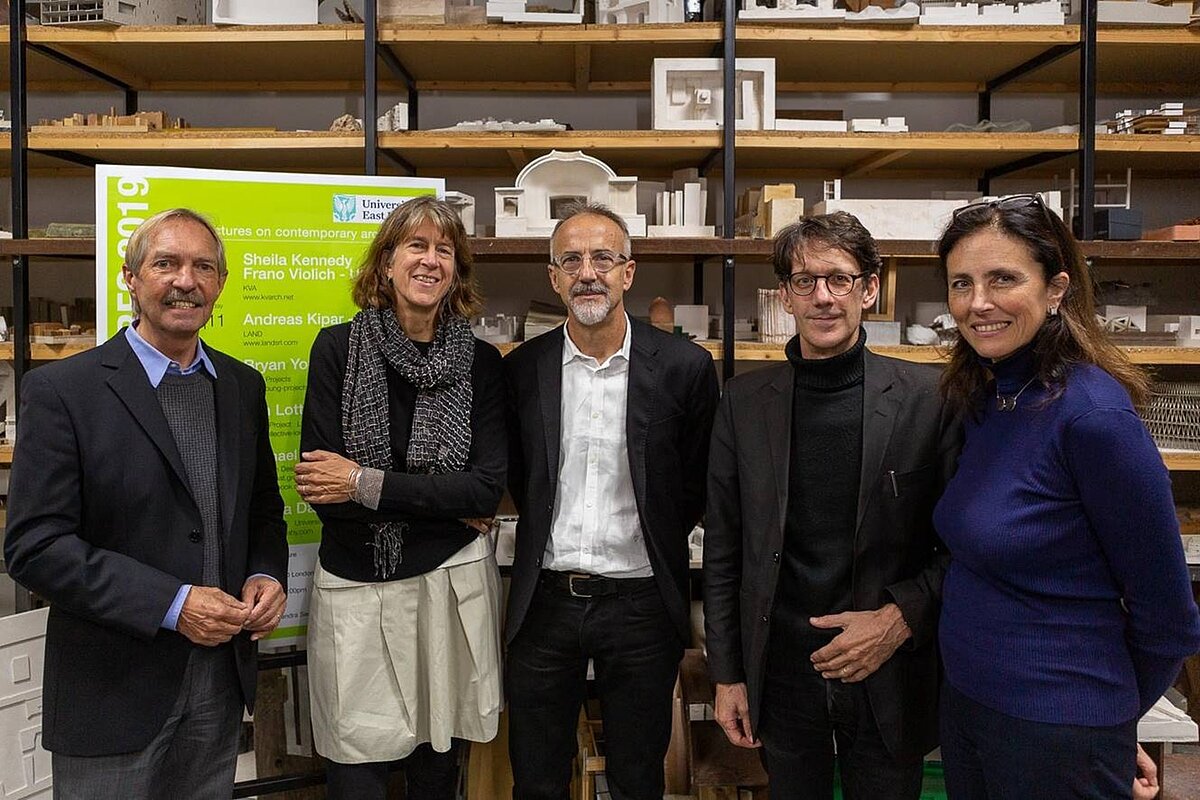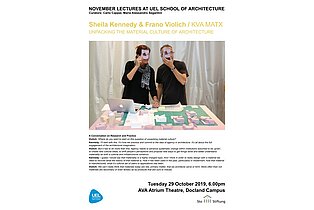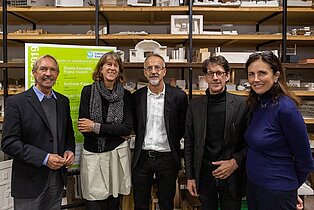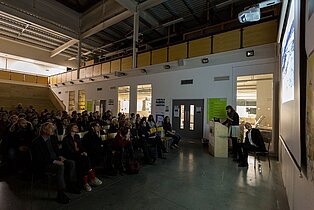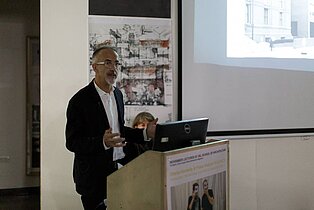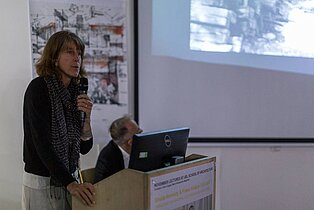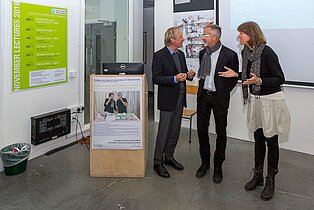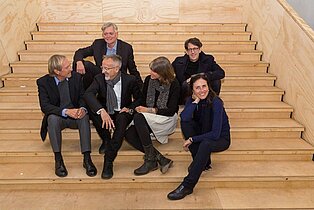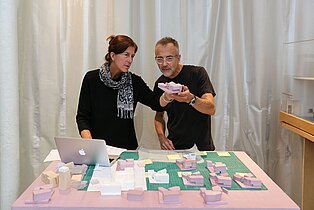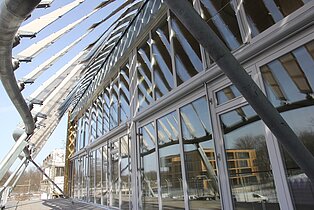Review | Sheila Kennedy and Frano Violich in London
The first talk of the November Lecture Series at the UEL School of Architecture was by Sheila Kennedy and Frano Violich, Principals at Kennedy & Violich Architecture (KVA) in Boston.
The focus of this year’s lecture series is the relationship between research and design. KVA has a materials research unit within its practice, MATx, that explores ways that renewable resources can be used, and how to incorporate biomaterials into architectural design, working with leading businesses and public agencies. Alongside innovation in materials, KVA has a special focus on the integration of digital technology in architecture.
The focus of the lecture was on the material culture of architecture. Kennedy explained our ideas of energy efficiency revolve around occupational energy, and as a discipline, architects need to move towards a better understanding of embodied energy and the provenance of materials.
Kennedy urged students to recognize the sense of agency that architects carry through their choice of materials, and the degrees of difference that can be made. Kennedy also highlighted the importance for this generation of architects to keep craftsmanship alive, calling for students to embrace the hybridization of the contemporary and the traditional, to prevent skills that have evolved over generations being lost and forgotten.
Kennedy highlighted the significant way that materials, including non-sustainable ones, have been standardized and corporatized to the point that architects often no longer question what can be a material? She introduced the notions of ‘soft design’, an act of imagination that sees nature, architecture and technology as a single spatial system, and ‘hyper nature’, using 100% natural materials to create something that doesn’t already exist in nature.
The first project Kennedy presented was Soft House in Hamburg, a public/ private passivhaus development, combining solid wood construction with textile technology, and twisting, ribbon facades that track and follow the sun for solar harvesting. Soft House uses solid wood planks, combining locally milled soft wood and hard wood, and is insulated with sheep’s wool. Kennedy reminded students that innovation can be as much about remembering materials that have been forgotten. Soft House also features curtain tracks that carry LED lighting and curtain walls that can be used to create interior microclimates.
Kennedy also presented RiverFirst, an urban design strategy for Minneapolis, to regenerate a stretch of the Mississippi River, and to redefine it as a viable public space after it had been neglected and polluted. Kennedy described KVA’s work with city authorities to reverse the infill of part of the river, to restore an island and create a public park and dynamic river system.
KVA created wooden platforms to increase public access to the river over the course of the development, and harnessed the unprocessed wood that flowed down the river to provide a natural, recycled building material. The practice also worked to reintroduce insect life to the river’s ecosystem, to support greater fish life, and encourage the return of birdlife, including eagles, to the area. Kennedy also detailed the social media intervention that was introduced to encourage the public to track the growing biodiversity in the river and to report pollution.
Violich presented two innovative academic buildings in America by KVA, The Tozzer Anthropology Building at Harvard and the Goergen Institute for Data Science at the University of Rochester. For the Tozzer Anthropology Building Violich shared the process, by which complex computational drawings were used to design the structural form of the building, and south Boston’s union brick masons came on board to realise these designs, prototyping the patterns with bricks cut and cast in different ways to facilitate and execute the ambitious vision.
Finally Kennedy detailed the East River Ferry Terminal in New York, a project that combines a physical and virtual dimension, and the Global Flora Greenhouse project for Wellesley College in Massachusetts, which harnesses a locally produced, low carbon, glass alternative, ETFE, that also allows the full spectrum of sunlight to reach the plant species within the biomes.
Interview-Video
Sheila Kennedy and Frano Violich spoke of their studios philosophy.


